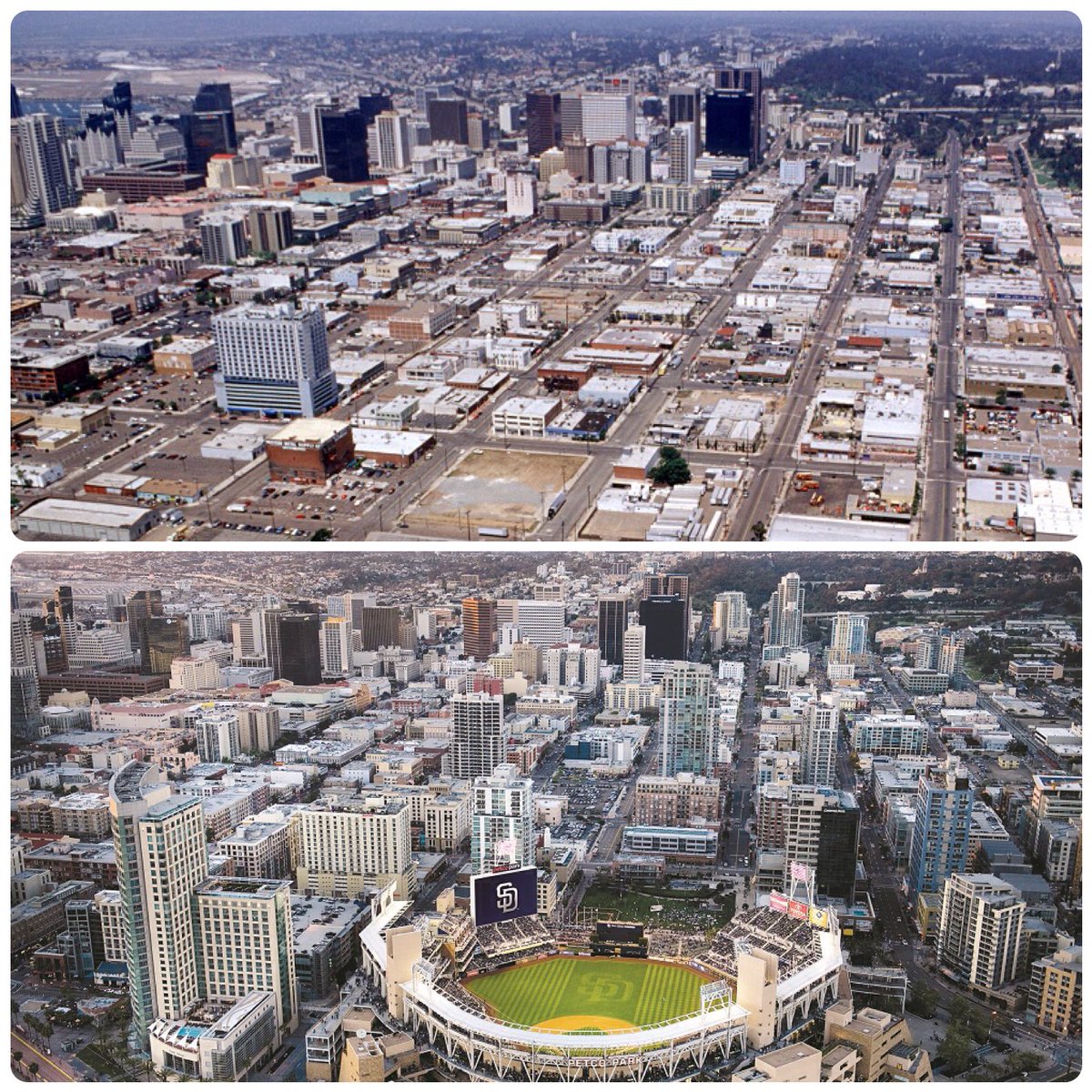| |
 Posted Feb 7, 2017, 2:12 PM
Posted Feb 7, 2017, 2:12 PM
|
 |
Ascension
|
|
Join Date: Nov 2004
Location: Riverside, California
Posts: 5,406
|
|
Quote:
Originally Posted by Crawford

Expected response. It's the economists that are superior to your (or my) anecdotes. Argue with the economic consensus, not me.
There's an absolute consensus that arenas, no matter how busy, don't revitalize cities and don't really provide net positive economic boost.
|
From 2010...
http://www.jmisports.com/petco-park-...ounty-economy/
Quote:
$1.8B Invested In Construction in Last 10 Years.
Development of downtown San Diego’s Petco Park has brought a 7.6 percent annual return on the community’s $300 million investment in the past 10 years, according to a consultant’s report released July 14.
The report by Minnesota-based Conventions, Sports and Leisure, or CSL, commissioned by the San Diego Regional Economic Development Corp., says benefits from the baseball stadium and surrounding development have surpassed the initial projected annual return of 1.7 percent.
CSL consultant Bill Rhoda, who presented findings at a downtown news conference, said the ballpark and surrounding 26-block ballpark district, from 2000 to 2009, generated more than $207 million in net new tax revenue, including sales, property, and transient occupancy taxes.
There was more than $1.2 billion in net new spending by visitors during that period, and the stadium’s presence also created 19,220 jobs and payrolls surpassing $783 million, according to CSL.
Julie Meier Wright, president and chief executive officer of the regional economic development corporation, which is supported by the business community through a nonprofit foundation, said the organization paid $65,000 for the CSL study. The aim was to determine whether the 42,500- seat ballpark, home to the San Diego Padres, has delivered financially on its original purported benefits.
A Catalyst for Development
Wright said findings indicate that Petco Park has exceeded expectations as a tax revenue generator, a catalyst for surrounding downtown development, and a boost for the county’s overall economy as it seeks to lure job-creating businesses from outside the region.
“It’s turned out to be much more than a ballpark,” Wright said.
The study’s release comes as city leaders are mulling how and whether to finance a proposed new stadium for the National Football League’s San Diego Chargers, possibly on downtown land just east of Petco Park. However, the report did not address football stadium issues.
Petco Park, which opened in 2004, was built through a partnership of the City of San Diego; the Centre City Development Corp., its downtown redevelopment agency; and Major League Baseball’s Padres.
Development of the stadium and adjacent ballpark district followed voters’ approval of Proposition C in November 1998, to provide public funding.
Proposition C passed with the support of about 60 percent of voters. As in other communities that have debated public funding of professional sports venues, local opponents said government funds should be devoted to more pressing, immediate community needs.
Construction on Petco Park did not begin until 2000, after being held up by several lawsuits challenging the project.
Major Impact
Commenting on criticism, in published reports, that the study credited Petco Park with benefits that could have actually been spurred by expansion of the nearby convention center, Rhoda said consultants were careful to limit the study only to construction and other impact created within the specific 26-block ballpark project area that includes portions of East Village.
In downtown areas where Petco Park and the convention center may have both generated results, Rhoda said that revenue was not factored into the ballpark impact numbers. So the impact of the ballpark could actually be higher than the figures reported, the consultant said.
Rhoda said the consulting firm has done several similar community studies related to professional sports stadiums in recent years, including newly opened venues for baseball’s Houston Astros and football’s Dallas Cowboys. He said San Diego’s ballpark compares well in terms of economic results generated.
“It’s one of the top-performing public-private projects we’ve seen to date,” Rhoda said.
Cumulatively, more than $1.8 billion has been invested in the construction of Petco Park and surrounding developments during the past decade. About $1.58 billion, or 84 percent, was private dollars, the CSL study said.
According to the regional development corporation, before approval of Proposition C, about 70 percent of the land in what is now the ballpark district was vacant or used for outdoor parking and storage. At the time, the entire East Village neighborhood generated about $2 million in property tax revenue.
The CSL study found that as of year-end 2009, more than 3,500 residential units, 957 hotel rooms and approximately 610,000 square feet of commercial space had been constructed and opened surrounding Petco Park, with a total estimated market value of $1.79 billion.
Regional Asset
“We are often asked to endorse major projects and lend support to making them a reality,” Wright said. “From an economic development standpoint, such projects become regional assets that are part of what makes San Diego an attractive place for a company to invest or grow.”
Wright said there are other upcoming local projects, including a new civic center, convention center expansion and proposed football stadium, that will have a favorable impact on the entire region.
“All these projects deserve objective scrutiny to ensure that they are legally and financially sound, and then they deserve public support,” she said.
In a statement responding to the CSL report, Padres Vice Chairman and Chief Executive Officer Jeff Moorad said the findings confirm “that Petco Park is a model for other municipalities to follow.”
Moorad, who is also a co-owner of the Padres, said the local results are a testament to Major League Baseball Commissioner Bud Selig’s legacy of getting new ballparks built “that are driving economic value to cities all across the country.”
He credited Petco Park’s success to city government leaders, Padres fans, and the early commitment and vision of Padres Chairman John Moores and former team President Larry Lucchino.
|
 https://pbs.twimg.com/media/CmzLZBMUkAAw8ho.jpg
https://pbs.twimg.com/media/CmzLZBMUkAAw8ho.jpg
__________________
Washed Out
|
|
|



